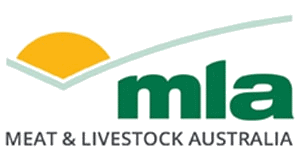L.ADP.2019 - Rangelands Living Skin - Final Report
| Project start date: | 30 April 2020 |
| Project end date: | 30 April 2025 |
| Publication date: | 08 April 2025 |
| Project status: | Completed |
| Livestock species: | Grass-fed Cattle, Sheep, Lamb |
| Relevant regions: | National |
|
Download Report
(14.2 MB)
|
|
Summary
Rangelands Living Skin was a five-year project linking farming families, scientists, education and extension agencies, commercial carbon companies and communications experts to evaluate cost-effective practices that focused on regenerating the NSW rangelands and supporting productive, profitable and sustainable businesses. The project aimed to create an evidence-base and build capacity for widespread adoption of practices that benefit soil, plants, animals and people – the living skin of the rangelands.
Objectives
The project was centred around four primary objectives:
1. Demonstrate, implement and measure a range of practices for rangelands production systems to increase productivity, and business and environmental sustainability.
2. Upscale for further data capture, validation and enable wider practice change.
3. Create wider awareness of a range of practices and support building of a larger rangelands stakeholder network, including advisors for ongoing implementation.
4. Validate and develop a framework for assessing and demonstrating improvements in ground cover and soil condition.
Key findings
• Results of the demonstration trials of scald reclamation interventions including ripping, high intensity animal impact, water ponding and gypsum found beneficial soil and vegetation outcomes from all practices. At a property scale, planned grazing management (adapting stocking rates to carrying capacity, and strategically grazing and resting land) was demonstrated to significantly increase ground cover (by 2-7%) in NSW rangelands over the long term (>10 years), although results depended on location. Small-scale trials on the use of foliar and solid biological stimulant products across four properties did not show benefit in pasture productivity and quality or soil biology.
• Assessment of soil organic carbon levels across 14 x 100ha areas showed soil carbon levels were generally low, there was little correlation with pasture variables at paddock scale, and there was considerable spatial variability across paddocks, even at short distances.
• Methane emissions from livestock were the dominant form of greenhouse gas emissions in rangeland grazing businesses. Average emissions (over five years, 2018-2023) across the four properties monitored ranged from 260 – 2233 t CO2-e per annum, with the number of livestock carried the primary driver of this difference.
• Financial benchmarking of the four core producer properties demonstrated it is possible to remain a profitable livestock business whilst simultaneously managing for environmental outcomes in NSW rangeland grazing systems. The four core properties participating in the Rangelands Living Skin project were profitable and competitive with top Australian producers involved in the RCS ProfitProbe benchmarking program, whilst adopting and adapting management practices to regenerate their landscapes.
• Emerging environmental markets present a significant opportunity to NSW rangeland grazing businesses, however several barriers currently limit access and adoption of these markets to rangeland producers.
Benefits to industry
Key benefits to industry of the project results include:
• Enhanced awareness and capacity building related to management and monitoring of soil, pastures, biodiversity, landscape function, productivity and profitability in rangeland grazing systems
• Improved collaboration and knowledge exchange between producers, researchers and industry stakeholders in the NSW rangelands
• Scientific evidence demonstrating the efficacy of management practices and enhanced understanding of relationships between carbon and environmental variables in data-poor rangeland areas
• Demonstration of environmental, productivity and profitability outcomes of management practices in NSW rangeland grazing systems.
Future research
Three research priorities are recommended to focus future efforts and work towards:
1. Understanding how to manage for carbon positive rangeland grazing businesses, and how to measure improvements in soil carbon and carbon cycling in rangeland environments
2. Understanding and promoting benefits and risks of rangeland management approaches to achieve positive environmental, productivity and business outcomes
3. Supporting access to emerging environmental markets, including addressing key barriers and providing information to support producer decision making.
Appendices to the Final Report may be made available upon request.
More information
| Project manager: | Mitchell Plumbe |
| Contact email: | reports@mla.com.au |
| Primary researcher: | NSW Department t of Primary Industry |


